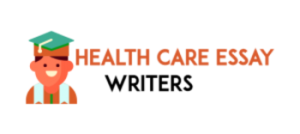Reply if you agree or disagree with the following post. 200 words.
Theory of Unpleasant Symptoms (TOUS)
Every day in practice as a nurse, whether in hospitals, clinics, or any place where a patient is assessed. Subjective data is necessary. These data are obtained by the patient or caregiver. Considering that each person is a unique being, nurses must conduct a multidimensional evaluation of the symptoms. This evaluation allows adequate treatment for the patient and peace of mind simultaneously for the patient’s caregivers. There are multiple tools to evaluate symptoms, but few evaluate multidimensional symptoms. Therefore, below there will be a brief compilation of the theory of unpleasant symptoms created and reviewed by Lenz, Suppe, Gift, Pugh, and Milligan, 1997, which can have been applied to practice and research by nurses and doctors.
Models have developed but are centralized specifically on the intensity and severity of a symptom. However, it is necessary to identify quality, distress, and duration. The theory of unpleasant symptoms (TOUS) as a guide is excellent for assessing a symptom or symptoms with the mentioned characteristics. This theory is based on the idea that if a symptom is well managed, it will have repercussions positive for other symptoms per a patient (Peterson & Bredow,2013)
On the other hand, the theory of unpleasant symptoms was developed to analyze the important aspects of the experience of the symptoms. The goals are to improve comprehension and help nurses in their research and practice. Lenz (2018)
The TOUS indicates that the symptoms could be measured according to intensity, time, distress, person to assess, and dimension of quality. At the same time, there are factors influencing, such as antecedents physiologic, age, gender, pathologies, pregnancy, surgery, medication, and radiotherapy. The factors are psychological, e.g., mood of the person, management of disease, and factors such as environment, social aspects, and financial aspects. Also, TOUS hypothesizes that a non-revision, treatment, or following of these three dimensions would affect the functional and/or cognitive performance of a person (Peterson & Bredow, 2013).
Nevertheless, the TOUS does not contain explicit interventions, so components of this theory implicate an intervention in every aspect already mentioned. Even so, the authors indicated that this theory has solid foundations for implementing interventions for the evaluation and management of symptoms (Peterson & Bredow, 2013).
The implementation of this theory is a guide for nurses and advanced nurses, beginning with obtaining clinical records that include factors, physiological, psychological, and situational, for instance, symptoms physiologic would include consequences of diseases, injuries, or management. The psychological aspect includes identifying depression, mood changes, or traumas. Finally, identify factors situationally implicated and identify conditions of life, family problems, and concerns. (Peterson & Bredow,2013)
Also, the implementation of theory allows for the evaluation of outcomes to periodically monitor the changes in the symptoms in the short and long term, so giving instructions to inspire self-control and self-care. Lenz (2018)
To conclude, the main thing is not to forget that each patient is unique and that the symptoms presented, whether caused by physical, psychological, situational, or related problems, are experienced individually. Based on this, as a family nurse practitioner, I would seek to collect as much data as possible on the symptoms indicated by the patient. This evaluation tool must contain at least three aspects to evaluate: physical, psychological, and situational. Once these data were obtained, I would analyze their relationship and how one symptom could be related to the other. Then I would evaluate the priority with the patient and caregiver to implement a work plan that involves the patient, family, and nurse, and finally, periodically evaluate compliance with the objectives. It should be noted that this holistic work must require support from other health professionals, such as case managers, social workers, psychologists, and psychiatrists, to fully meet the objectives.
References
Sandra J. Peterson & Timothy S. Bredow (2013) · Middle Range Theory: Application to Nursing Research and Practice, Third Edition P.P 78-86.
Lenz, Elizabeth R. (2018). Application of the Theory of Unpleasant Symptoms in Practice: A Challenge for Nursing. Investigación en Enfermería: Imagen y Desarrollo, 20(1).
